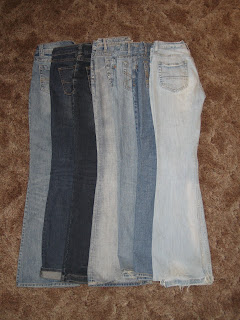
 http://www.suesoldfashions.com/photos/pantalettes.jpg
http://www.suesoldfashions.com/photos/pantalettes.jpg
Fischer, Gayle. Pantaloons and Power: A nineteenth Century Dress Reform in the United States. Kent State University Press. 2001.

http://media.photobucket.com/image/pantalettes/GeneralOlde/Alice%20in%20Wonderland/AIW-112.jpg?o=4

http://upload.wikimedia.org/wikipedia/commons/3/32/Pantalettes_godeys_1855.jpg

http://www.mediatinker.com/blog/images/pants-comfy-construct.jpg

 these are all of my jeans.
these are all of my jeans. this is my favorite pair of pants, my skinnies.
this is my favorite pair of pants, my skinnies.b. cultural context: during the nineteenth century, many social changes were taking place all over the country. urbanization fueled the growth of hundreds of densely-populated cities, wars contributed to the need for new factories and jobs, and people started migrating west. many revolutions popped up. women struggled for more rights and fought for the end of slavery, new religions were formed, and controversy surrounding Native Americans raged. the nineteenth century was truly a chaotic time of change and disorder. as explained in the book "pantaloons and power" by gayle fischer, "bifurcated garment (that is, garments divided in two, such as pants with two legs) belonged strictly to men, and only women wore skirts...when women's pantaloons dress reformers entered the world of antebellum reform, they were seen as participants in the nation's social breakdown rather than as part of the solution." but i think that it was a solution; the changes associated with women wearing pants, such as voting rights, have changed america for the better.
c. classification: pantaloons can be classified as an enclosure to the body. they modify the body in several ways. wearing pants can add color to an ensemble, and they increase the volume of the legs. pants provide a new structure to the legs, because they are not form-fitting, and therefore add a ruffled shape. the texture of pants can be rough or smooth, and can make ruffly rustly sounds when you walk. it's a body modification that can change the shape of the legs and be the defining component of an outfit.
d. the dress practise of pantaloons relates to two legs underneath, separating them as a bifurcated garment. pantaloons are different from bloomers or breeches because they are a littel tighter around the leg. if we look at sheldon's somatotypes, i would say that the body that is wearing pantaloons is ectomorphic.
e. pantaloons could and can be worn in any climate. in the 19th century the occupation for wearing them was mainly in social functions. women wore them under their skirts, and so that would demonstrate a two-layer zone. in today's society, and specifically in utah, we wear pants almost everyday, especially in the winter, so our clothing extends into the three-layer zone.
